Written Response
Campaign
The ‘Recycled Records‘ campaign, created by the Coca-Cola company is part of its larger initiative ‘Green to Clear’ which switches the plastic bottles of Sprites from green plastic to clear plastic. The campaign introduces:
- a documentary-style short video
- an original EP made up of the sounds taken from the recycling process and produced by Mark Ronson and Madlib
- an interactive website, featuring a series of vintage posters and a built-in synthesiser


Simplification as a tool for greenwashing
The way that brands greenwash their practices to signal their good and ethical practices and how they continue to create products and services branded as sustainable that we just do not need but never challenge the system that created problems to begin with. We choose to simplest way to look forward and fixating on technology to fix our problems.
Abdulla, D. (2022) On the Contradictions of Sustainability. Available at: https://futuress.org/learning/contradictions-of-sustainability/ (Accessed: February 10, 2023).
Take the short film, for example, it divided the recycling process of a clear plastic bottle into a few steps:
- tossing plastic bottles into a recycling bin,
- the city collects and delivers these bottles to the recycling centre
- the bottles are sorted and put into bales
- the bottles are broken down into pieces and then remade into new clear plastic bottles

Systems
To uncover the actual recycling process, we take a closer look at the systems involved in the process.
The Coca-Cola System
The Coca-Cola Company doesn’t own the Coca-Cola System, so who should take responsibility for recycling? The bottling partner, grocery stores, or the customers? If no one takes responsibility, where do all these recyclable plastic bottles go? Will they go to a landfill like some general waste, and where would that landfill be?
- The Coca-Cola Company
- The primary way that Coca-Cola products reach the marketplace starts with Coca‑Cola, which manufactures and sells concentrates, beverage bases and syrups to bottling operations. Coca‑Cola also owns the brands and is responsible for consumer brand marketing initiatives.
- Bottling Partners
- The Coca‑Cola bottling partners manufacture, package, merchandise and distribute final branded beverages to Coca-Cola’s customers and vending partners, who then sell our products to consumers.
- The Coca-Cola Company does not own, manage or control most local bottling companies though they funded many of the facilities in Africa and South East Asia.
- Customers and Vending Partners
- All bottling partners work closely with customers – grocery stores, restaurants, street vendors, convenience stores, movie theaters and amusement parks, among many others – to execute localized strategies developed in partnership with our company. Customers then sell Coca-Cola products to consumers at a rate of 2.2 billion servings a day.
https://www.coca-colacompany.com/about-us/coca-cola-system
Recycling System
Recycling is not a solution to our plastic pollution crisis, but a last resort. When talking about recycling systems, we’ve considered a few factors:
- Recycling rate
- Just because something is recyclable doesn’t mean it will be eventually recycled; therefore, the recycling rate is an important factor when talking about recycling systems.
- Landfill
- Any recyclable that is not recycled goes to a landfill like any general waste
- Global waste trade
- Along with other recyclables, it is a common practice to export plastic waste to a neighbouring or poorer countries, which lack recycling infrastructure
Colonialism
Pollution isn’t an unintentional by-product of economic growth; instead, it is a deliberate choice and the choice is to pollute unevenly, to shift the blame for a lack of infrastructure in the ‘less developed’ countries and to eventually gain constant access to Land by offering ongoing, ‘civilised’ solutions to the climate crisis. We need to learn more about our culture and history of exploitation.
Plastic’s Moral Economy
There is a long history of judging a society’s waste management as a proxy for its level of civilization. […] In short, from a colonial point of view, models of waste management are tied to ideas about civilization (European self-portraiture) and morality.
Colonialism in the name of plastic
This recommendation follows a long line of colonial acts in the name of plastics, from accessing Indigenous Land to extracting oil and gas (and occasionally corn) for feedstock; to producing disposable plastics that use land to store, contain, and assimilate the waste; to pointing the finger at local “foreign” and Indigenous peoples for “mismanaging” waste imported from industrial and colonial centres; and then gaining access to that Land to solve their uncivilized approach to waste (mis)management.
Liboiron, M. (2021). Pollution Is Colonialism, Duke University Press,. ProQuest Ebook Central, http://ebookcentral.proquest.com/lib/ual/detail.action?docID=6527589 (Accessed: 6 February 2024)
Materiality
- Downrecycling
- Microplastic
- Sorting
People and communities
We noticed the absence of people, especially the labourers, in both the video and website of ‘Recycled Records.’ The removal of human beings is intentional, preventing viewers from considering the impact of working in a recycling centre might have on the human body.
What are the noise levels, hygiene conditions and air condition within a recycling centre or a recycling site?
Do all workers have access to personal protection equipment? Is the personal protection equipment enough to protect these workers?
Process
Iterating
As designers, our devices of storytelling are typography, colour, shapes and form (Rock, 2009). When stripping away all these devices, we can see that these vintage posters of Sprite and the Recycled Records campaign don’t have any actual content and all the messages lie within the design elements. These posters managed to create an illusion and evoke a feeling of nostalgia, taking us back to the good, old days when Coca-Cola wasn’t the top plastic polluter in the world. What the designers also did was remove Sprite, the second most popular brand in the Coca-Cola company, from the corporate context and re-contextualise the brand as well the plastic bottle as an almost ‘innocent’ subject in an independent music studio.
In the documentary-style video, the use of a black-and-white filter has not only toned down the messiness of the recycling system but also signified that plastic waste is obsolete. In contrast, all the modern factories are shown in full colour with an oversaturated red that is on brand with the Coca-Cola company.
All these design choices convey messages and reshape experiences, perceptions and, ultimately, relationships between the viewers and the world (Rock, 2009).






Curating a image collection through iterating
Karel Martens considers limitations an important factor in his design practice. Possibilities can only be created in contrast to restrictions. Through the process of iterating, Martens created numerous variations from a limited collection of images. Martens also considers absence as essential as presence in design for absence alludes to curiosity.
As we were sourcing, building and sorting our collection of images for this project, we mainly used two image databases, Britannica ImageQuest and JSTOR. Being aware of the limitations, biases, and Euro-centric ideologies within these Western image databases, I also found that working with these limitations made me realise the importance of an alternative narrative.
It’s easy to reject these images for its Western biases and influence, but how could we make use of these images by reading these images from different angles? What is absent in these images? How could we expose the biases and limitations in these images through an iterative and reflective design process? How could our catalogues of images offer an alternative narrative, depicting something that was not in the original databases?
But for Karel, it’s imperative to remember that graphic design was born out of restriction; restriction of what the hands can do with print. So the fundamentals of the art remain much the same for this new era. The process of graphic design can be boiled down to this question posed by Karel: “How many different elements do you need to tell the story?”
Ong, J. (2020) “Absence in design is very important”: Karel Martens on paying attention to the things we don’t see. Available at: https://www.itsnicethat.com/features/karel-martens-re-printed-matter-graphic-design-020920 (Accessed: 12 February 2024).
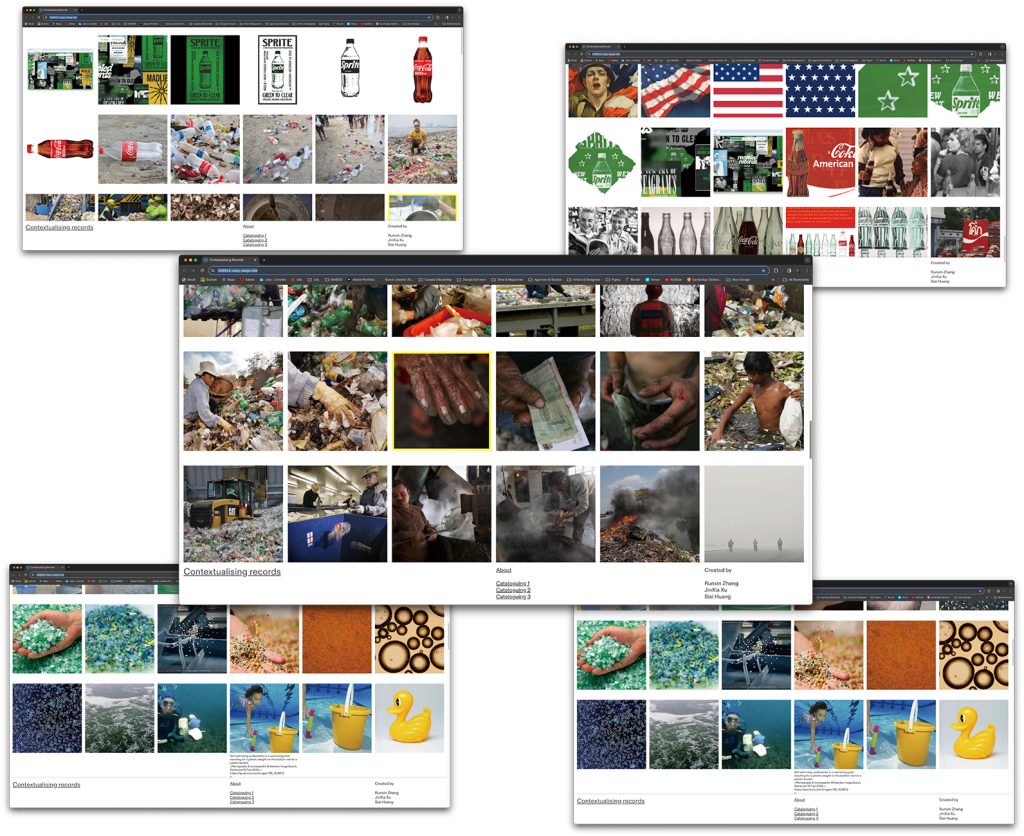
Construct alternative narratives through cataloguing
https://059922-copy.cargo.site/



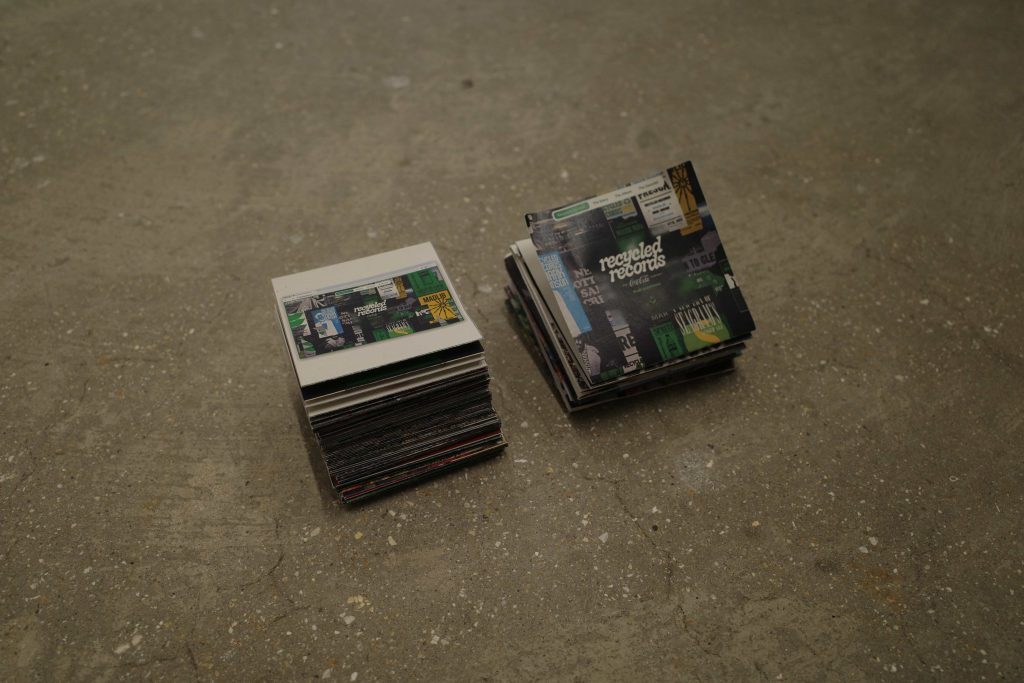
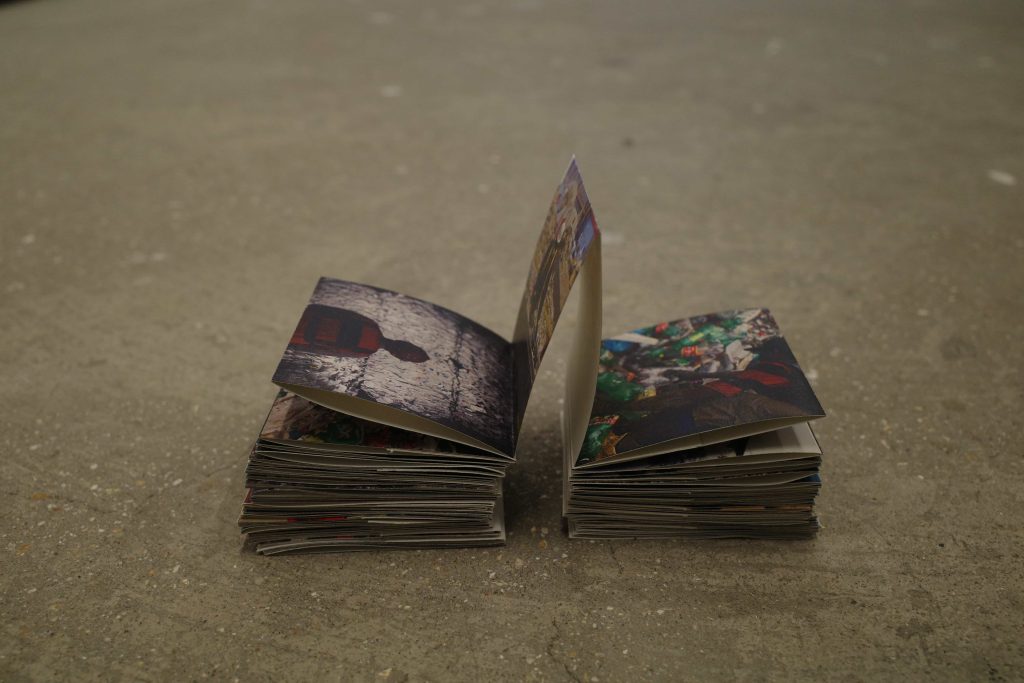
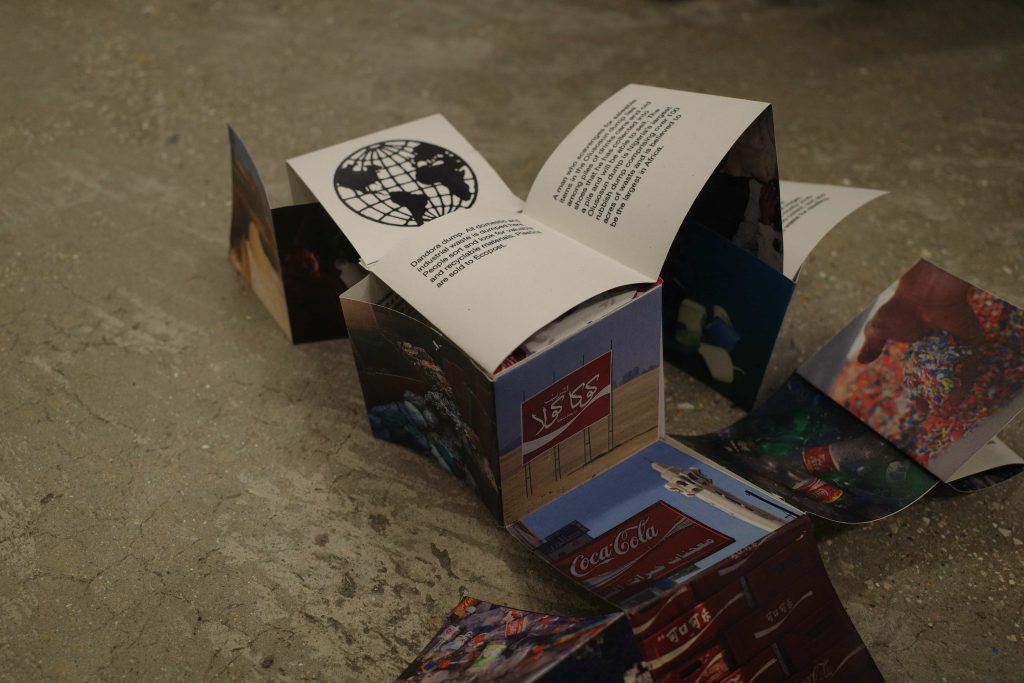
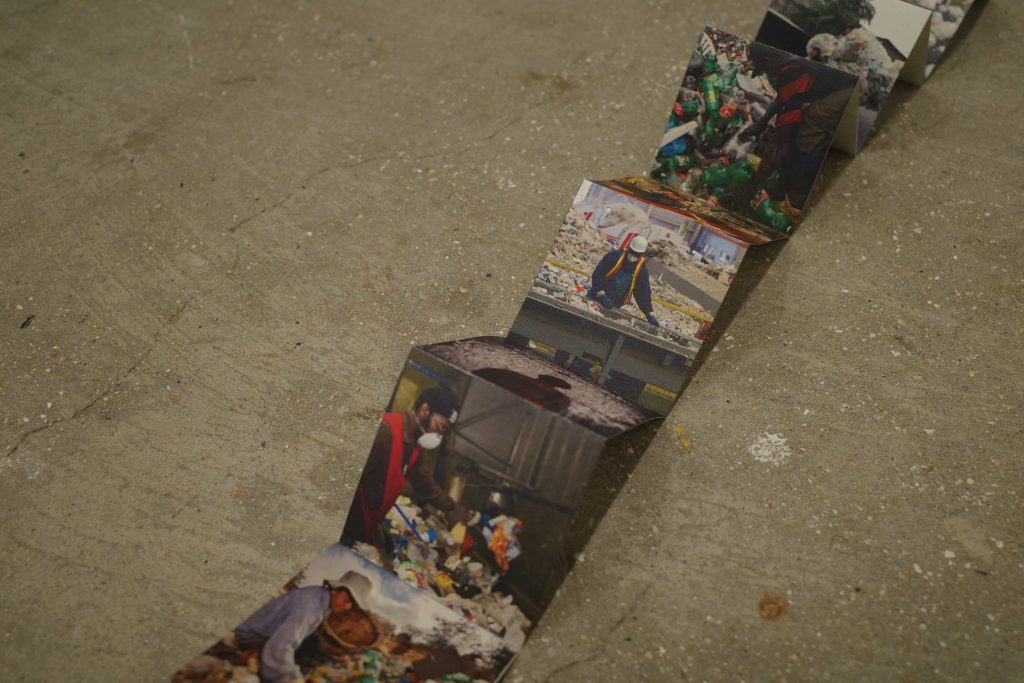
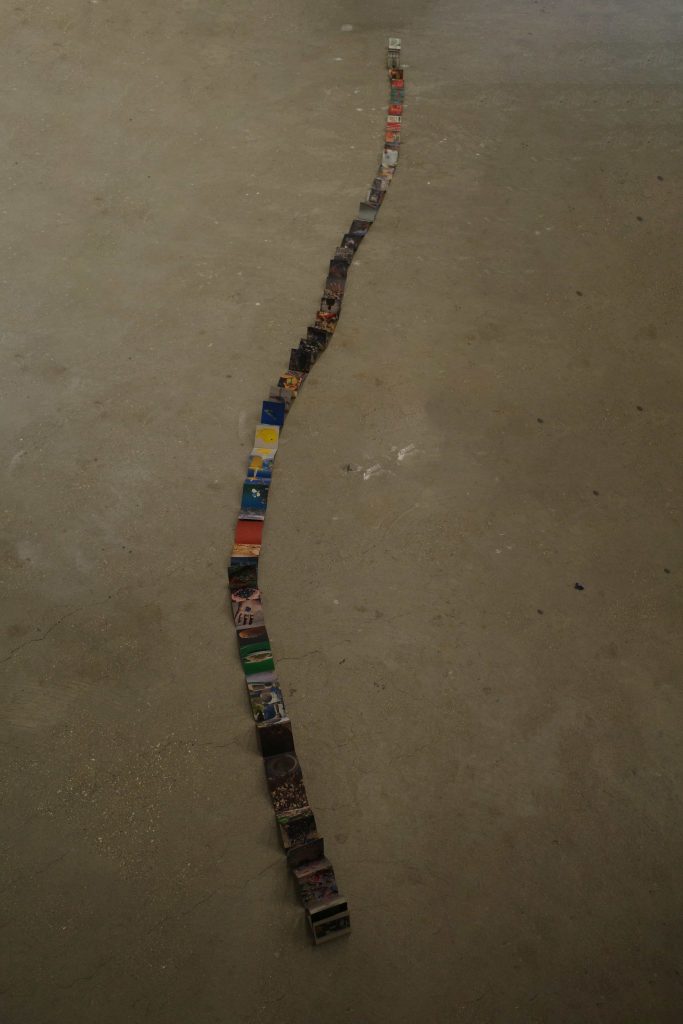
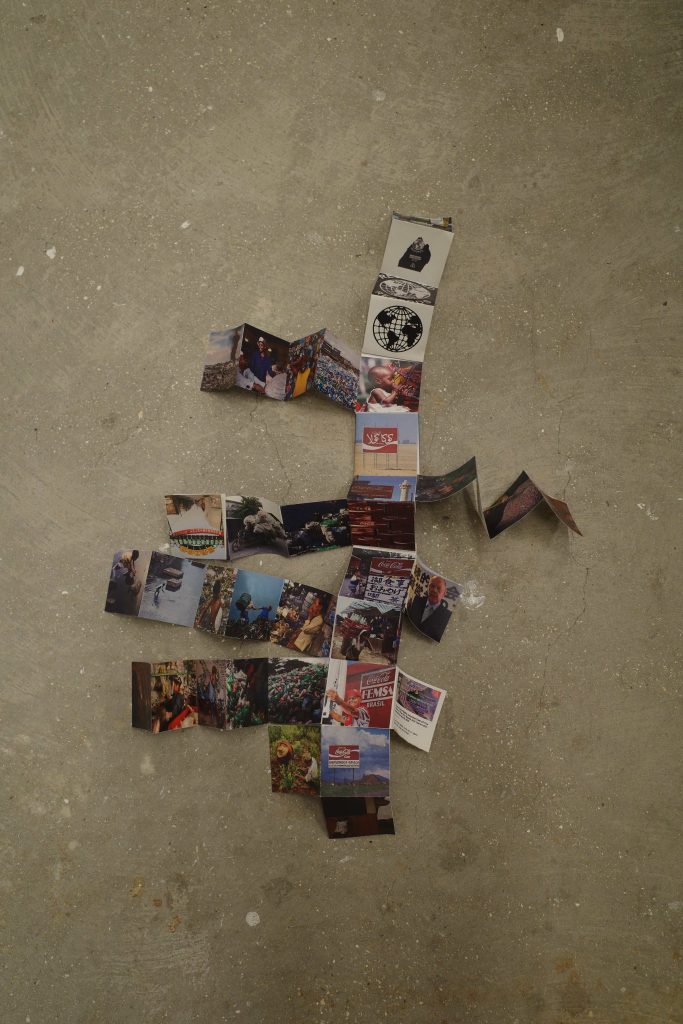
References
Abdulla, D. (2022) ’On the Contradictions of Sustainability’ [Recorded talk]. Futuress. 22 November 2022. Available at: https://futuress.org/learning/contradictions-of-sustainability/ (Accessed: 5 February 2024).
Bratton, B. (2013) ‘We need to talk about TED’, The Guardian, 30 December. Available at: https://www.theguardian.com/commentisfree/2013/dec/30/we-need-to-talk-about-ted (Accessed: 15 February 2024).
The Coca-Cola Company (no date) The Coca-Cola System. Available at: https://www.coca-colacompany.com/about-us/coca-cola-system (Accessed: 11 February 2024).
The Coca-Cola Company (2022) Recycled Records. Available at: https://greentoclear.com/ (Accessed: February 19, 2024).
Koolhaas, R. (2018) Elements of architecture. Koln: Taschen.
Liboiron, M. (2021). Pollution Is Colonialism, Duke University Press,. ProQuest Ebook Central, http://ebookcentral.proquest.com/lib/ual/detail.action?docID=6527589 (Accessed: 6 February 2024)
Marten, K. and Fitzpatrick, C. (2017) Motion. Kunstverein München and Roma Publications.
Ong, J. (2020) “Absence in design is very important”: Karel Martens on paying attention to the things we don’t see. Available at: https://www.itsnicethat.com/features/karel-martens-re-printed-matter-graphic-design-020920 (Accessed: 12 February 2024).
Rock, M. (2009) Fuck Content. Available at: https://2×4.org/ideas/2009/fuck-content/ (Accessed: 16 November 2023).